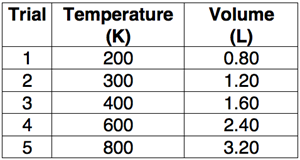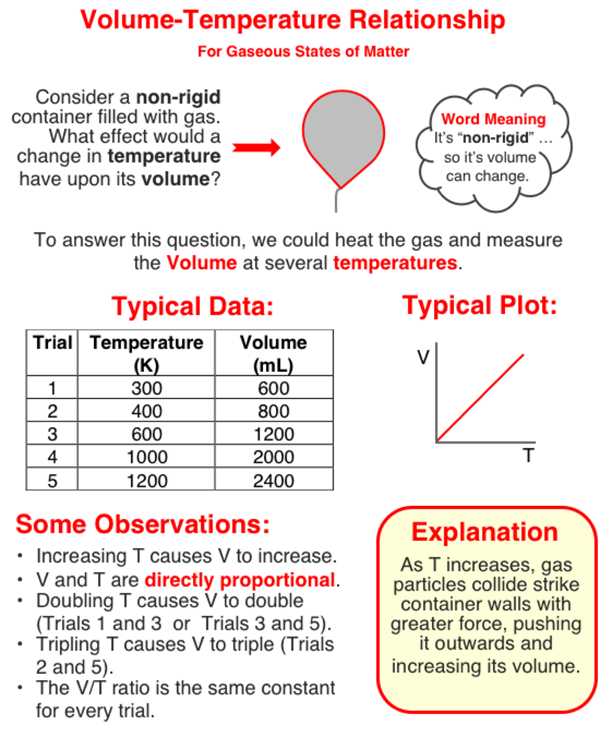The volume of a sample of gas is dependent upon the Kelvin temperature of the gas. Increasing the Kelvin temperature increases the volume. The two quantities are directly proportional to one another. A quadrupling of the Kelvin temperature will quadruple the volum of the gas.
Volume and Temperature - Questions 6 Help
There are two questions in this Question Group. Each question is very similar to one another. The question below is one of the questions.
Version 1:
 Observe the data table shown at the right for a sample of gas that has a constant pressure and number of particles. Use the data table to answer the next two questions.
Observe the data table shown at the right for a sample of gas that has a constant pressure and number of particles. Use the data table to answer the next two questions. When the Kelvin temperature of the gas is quadruple (increased by a factor of four), the volume of the gas becomes _____.
a. four times larger b. eight times larger
c. sixteen times larger d. one-fourth the size
e. one-eighth the size f. one-sixteenth the size
g. Not possible to tell
Which pairs of trials demonstrate this relationship? Select all that apply.
a. 1 and 2 b. 1 and 3 c. 1 and 4 d. 1 and 5
e. 2 and 4 f. 2 and 5 g. 3 and 4 h. 3 and 5
